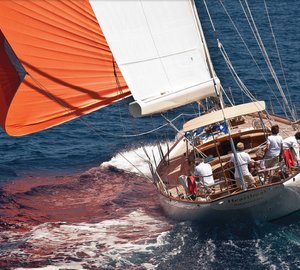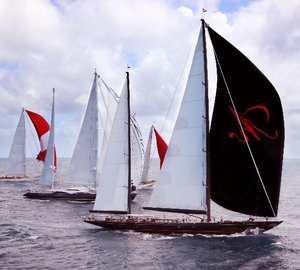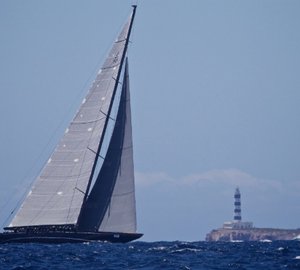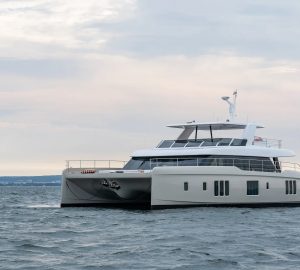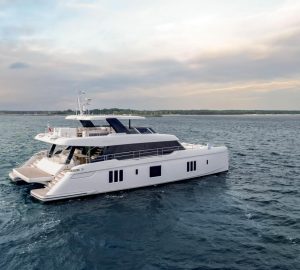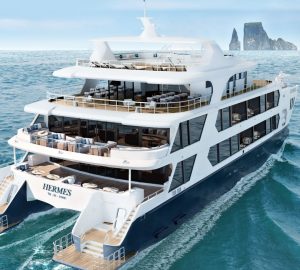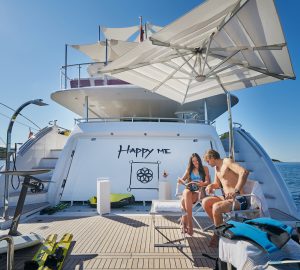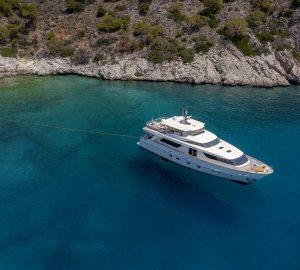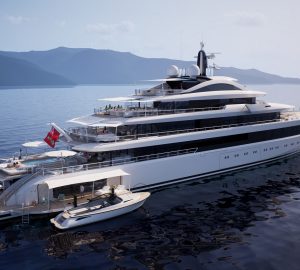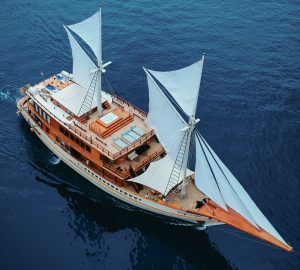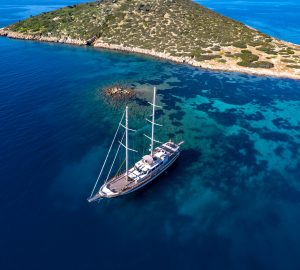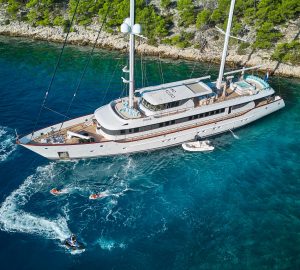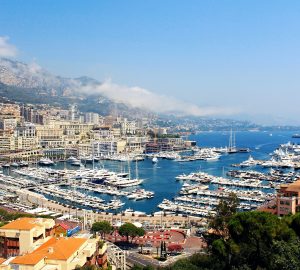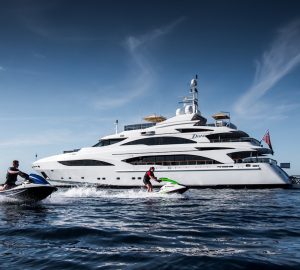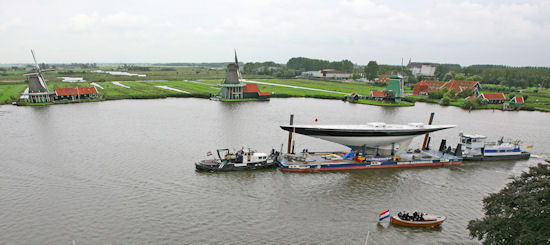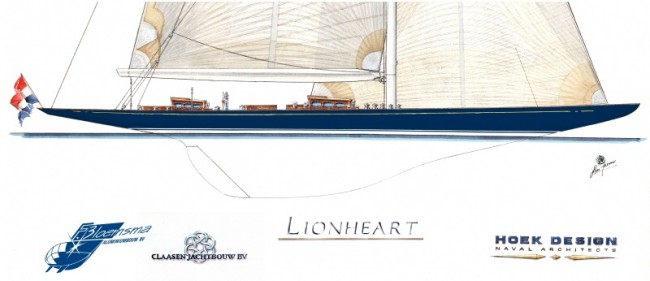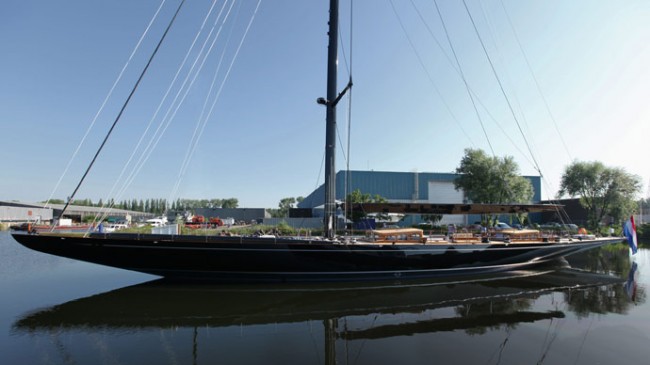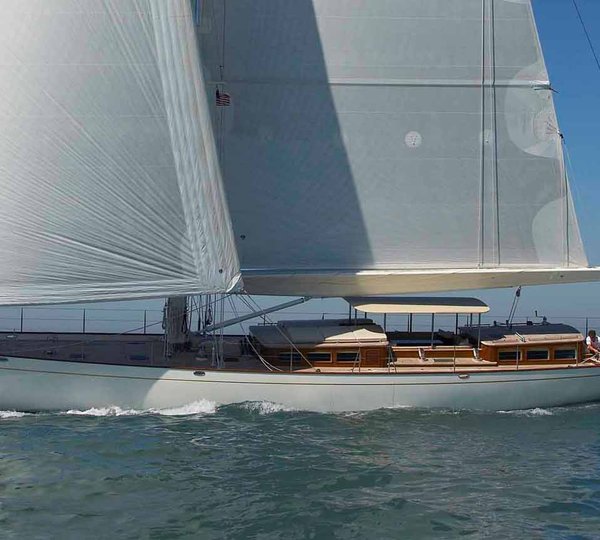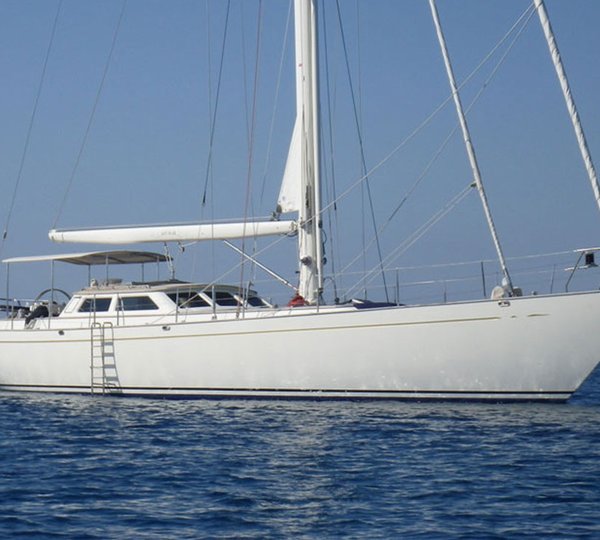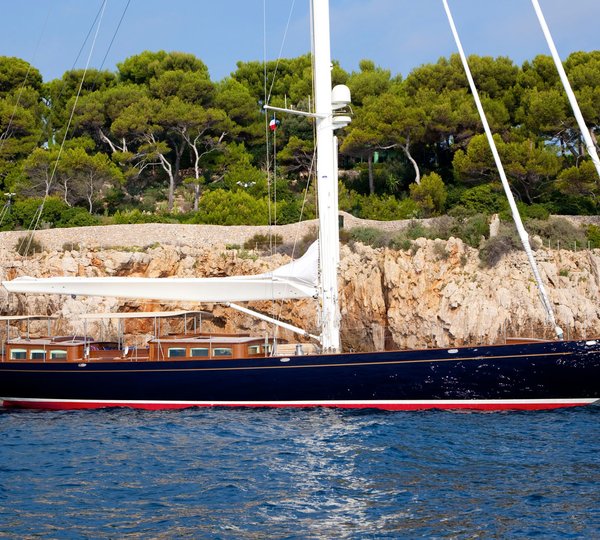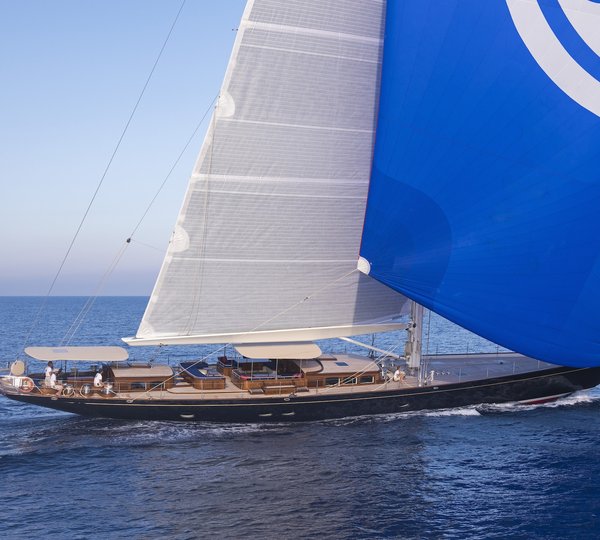The J-Class sailing yacht Lionheart is the first of a new breed of aluminium J-Class yachts which are are built to a Hoek yacht designs at Holland’s Claasen Jachtbouw shipyard. One of the leading offices in classically styled sailing yachts, Hoek Design is intimately involved in the revival of these magnificent yachts from the 1930s.
Sailing yacht Lionheart incorporates two small separate deckhouses and cockpits – one of which is designed especially for the yacht’s owner and guests. This feature gives extra versatility for both racing or cruising the superyacht.
When delivered Lionheart will be the largest J-Class superyacht in existence, with 17m overhangs on an LOA of 43.4m. ABS classed and MCA compliant, she will be able to accommodate eight guests in four cabins.
Hoek Design has developed specific Velocity Prediction Software for J-Class yachts in partnership with Piet van Oossanen of wing keel fame. This highly sophisticated Velocity Prediction Program (VPP) has been developed specifically for these craft, and was calibrated using tank test data from a six-metre long model of a J. The aerodynamic part was calibrated with wind tunnel test data. “In contrast to other types of software, our VPP software is capable of calculating rudder angles as well as predicting performance in waves,” Andre Hoek explains. “This enables us to also optimise helm balance.”
Originally designed for the Ranger syndicate by Starling Burgess and Olin Stephens, Lionheart is the first yacht to be built based upon this research. Under construction for a repeat customer of Hoek Design, she will be the largest J afloat when launched. Tremendous 17-metre overhangs on a LOA of 44 metres have created a fascinating super J with a maximum waterline length.
Hoek: “We extensively optimised Lionheart’s structure using 3D structural modelling techniques with finite element software programs. The complete hull structure was analysed for stiffness and torsion, and her stiffness compared to the steel original. The weight of the hull structure was also further optimised, while the hull was developed in high tensile Alustar plating and extrusion materials to provide even greater stiffness. We also carried out extensive research into the mast position, and sail area vs. handicap in order to create a yacht that would perform to her best on the race course.”

